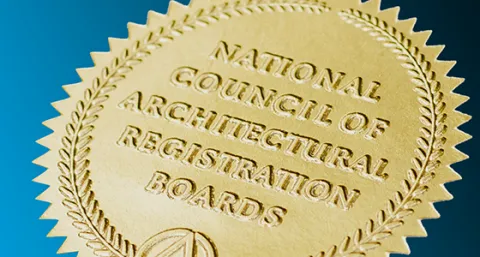Nebraska architect Lenora Nelson, NCARB, AIA, LEED AP BD+C, shares what it means to be a code official and how she integrates architecture into her role.
Tell us about your responsibility as a building official for the city of Ashland, NE.
In my role as a building official, I process and review all building permit applications and complete all construction-related field inspections. I also serve as the city’s zoning administrator, floodplain administrator, and economic development official.
You’re also an architect. How does your architectural background impact your role as a building official?
Having spent many years applying building codes as one of the many guidelines that drive a project’s design, I am able to work with homeowners and builders to find innovative solutions to the challenges that a project site or an existing building may present.
What inspired you to focus your work on codes?
After spending the first phase of my professional career focusing on housing and educational projects, it became clear to me that the driving force behind these buildings was the end user. A user whose health, safety, and welfare we, as architects, profess to protect. A clear understanding of the codes and the reasonable application of their noted exceptions is paramount in taking a successful project from schematic design to final occupancy.
You also serve on the Nebraska Board of Engineers and Architects. What has that experience been like?
I am honored to have been appointed to serve on the Nebraska Board of Engineers and Architects. I feel that I bring a unique perspective to the group as a building official for a community of around 2,500 people. Many small communities do not have a staff member dedicated to permits and construction activities, so it is important to keep the language of our rules and statutes clear and consistent so they can be applied fairly and equally to all of our state’s municipal jurisdictions.
Are there any aspects of building safety the architecture community should be more aware of?

Get NCARB Certified
Want reciprocal licensure across the U.S. and abroad, access to free continuing education, use of the NCARB credential in your title, and more benefits? Apply for the NCARB Certificate.
Violent tornadoes (4 or 5 on the Enhanced Fujita scale) occur more often in the United States than in any other country, and Nebraska is located in a part of the country known as “Tornado Alley.” In response to that, I am seeing a lot of storm shelters being constructed in single-family residential projects, which is a wise addition to the standard design. These rooms are typically located beneath the garage, so the garage floor becomes a concrete lid for the space. Adding a heavier grade storm-resistant door and hardware set is a minimal upgrade to the overall project cost that can save the lives of your loved ones.
What advice do you have for licensure candidates becoming more familiar with building codes?
Seek out the code experts in your office and get to know them. Sit down for a cup of coffee and ask them about lessons they’ve learned over the course of their career. Stop by a local building and zoning department, introduce yourself, and ask them about common mistakes for the building types you are working with.
How has having an NCARB Certificate benefited your career?
I was living and working in Maryland when I received my initial license. When I moved back to my home state of Nebraska, I was able to submit my NCARB Certificate with my application for reciprocal licensure—the process was very simple. I am very proud to include NCARB in my list of professional credentials.
What would you like the public to know about the importance of building codes?
Building codes exist for a reason. You can’t put a price on the safety and the lives of your family, your staff, or your customers—the users of the built environment we regulate. It may cost a bit more to fireblock the penetrations in a new wood-framed residence, but if that home is filled with smoke and flames, these adjustments can provide more time for everyone to get out safely. The home can be replaced; your loved ones cannot.
